SEARCH


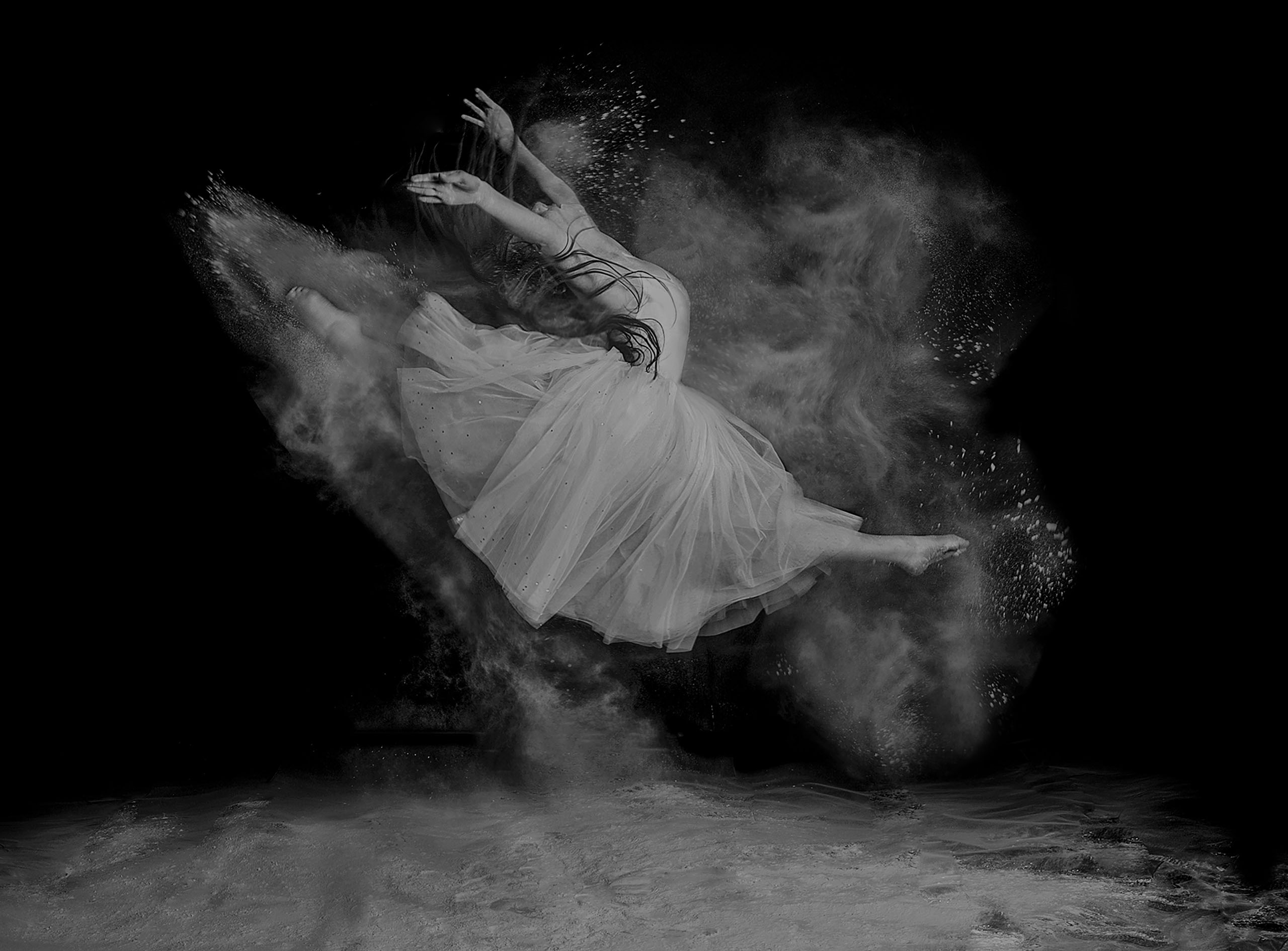
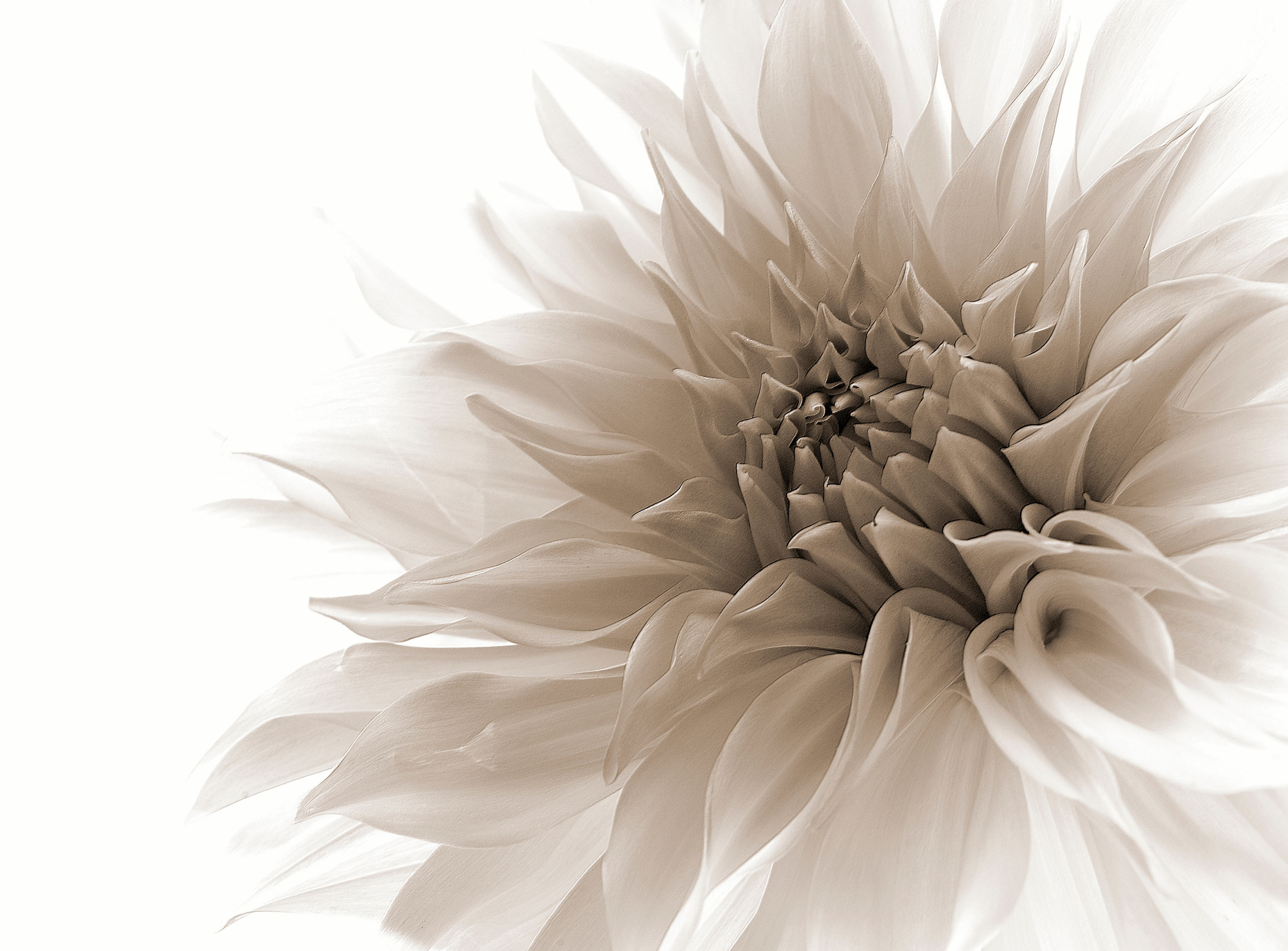
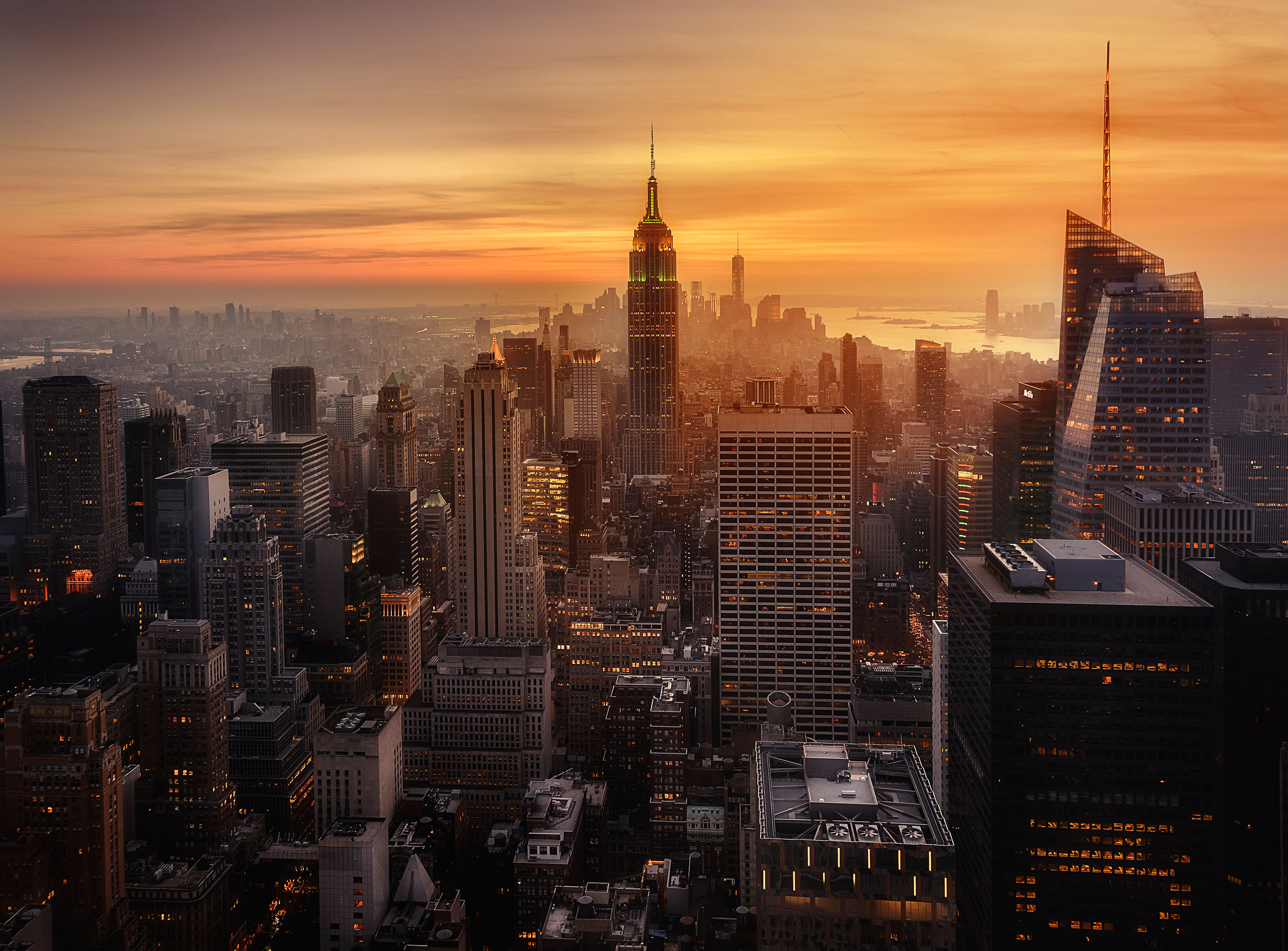
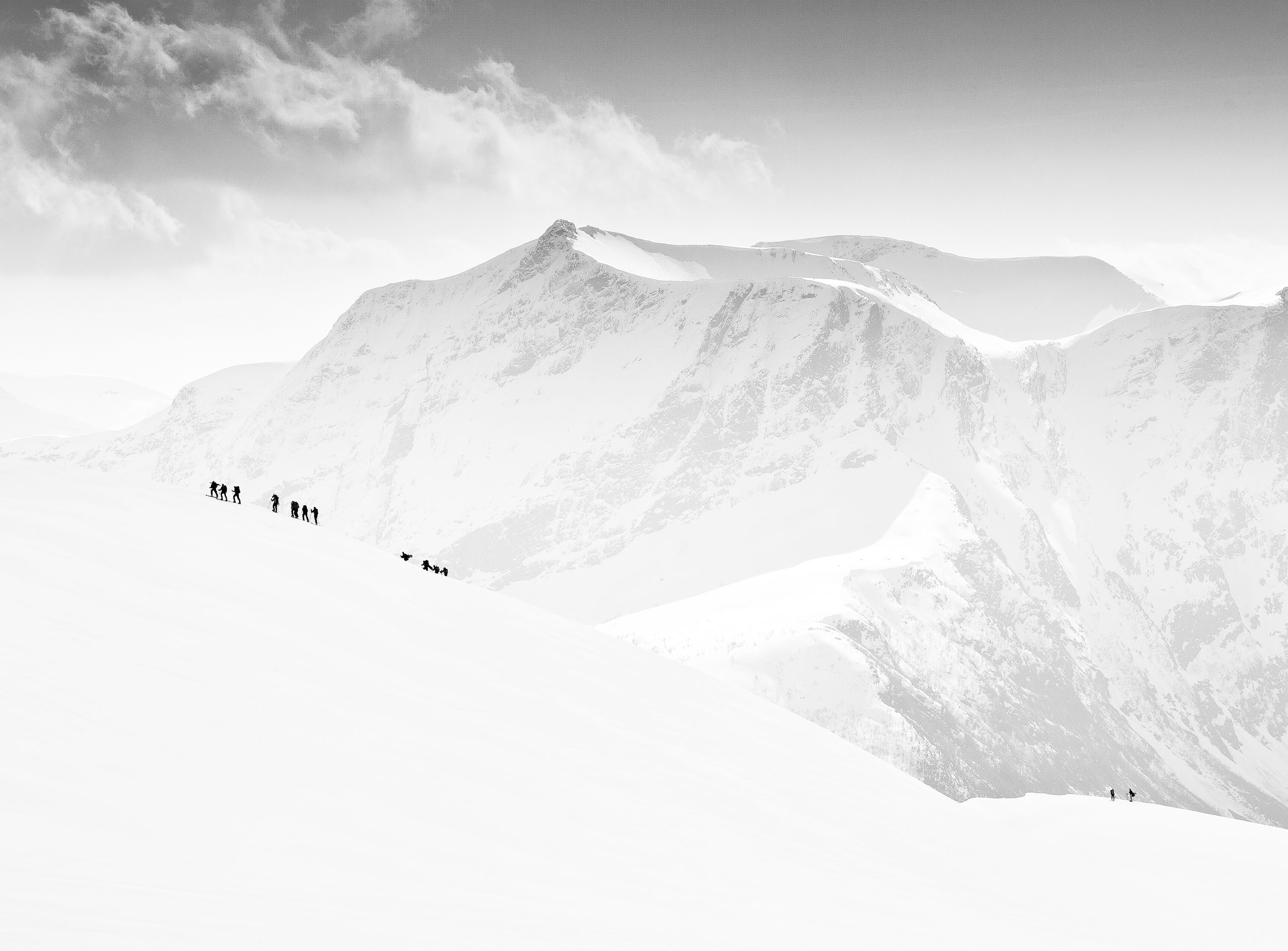
|
|
|
|


by Yvette Depaepe
Published the 4th of March 2024
The underwater photographs of Andrey Narchuk are amazing and stunning. As he describes, to him, underwater images are pure art but also storytelling and narrative communicating important information. He quotes: 'Underwater you can feel like a pioneer. Every dive is like crossing over to another world.' Andrey find it essential to convey feelings and impressions of the underwater world even to people who have never dived so that they want to see it all with their own eyes. According to him, this is where history, colours and shooting techniques come into play. It is necessary to attract attention and interest at any cost.
Thank you for sharing all that beauty that some of us - or most of us - will never see for real.
Enjoy a journey through this wonderful underwater world seen through Andrey's lens.
Dear Andrey, please tell us briefly about yourself, your hobbies and other activities.
My life is divided into two comparable parts - one of them is my work related to software development and analytics. For many years, I have been leading several projects of automated control systems for large enterprises. It takes a lot of time, but it allows me to realise projects related to my main hobby: Underwater photography. To be precise, it's not only about photography. I'm interested in anything that has to do with the underwater world. Biology, Environmental Education, writing articles, organising exhibitions and competitions, producing albums. At one time I published a magazine and now I am a board member of a public organisation of nature photographers in my homeland.
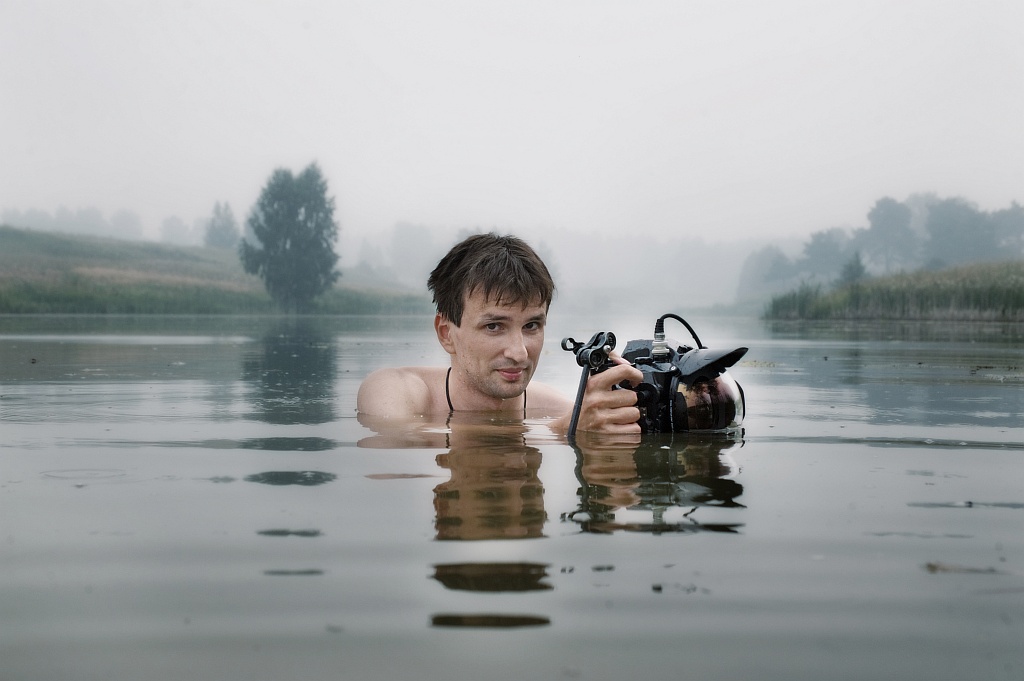
How have your story and life experiences influenced your photography?
I have always loved and enjoyed technological innovation. I am interested in trying out new devices and gadgets. Especially if they allow me to do something completely new. And it was the advent of new digital cameras (more than 20 years ago) that attracted me to photography. A few articles about cameras were enough for me to realise that this was the device for me.
I had just graduated from university and got a job. In fact, I spent my first few wages on a camera. After that, I never parted with it - I took it everywhere. And I took pictures everywhere. I was particularly fond of nature photography.
Some time passed and the events that would shape my future life took place. I went to the Red Sea for the first time and at the same time I saw an underwater case for my camera on sale. The impression of the underwater world overlapped with the possibility of filming it. Six months later I returned to the Red Sea, this time with a camera and an underwater housing.
The final straw was a giant manta ray that swam up to me as I was taking my first pictures in front of my hotel. It swam with me for almost an hour. The rarity of this event may be illustrated by
the fact that in several dozen trips to the Red Sea I have never seen another manta ray. I can only call it fate.
'Sonata'
What are the most important events that have influenced your work?
There were two things that had a big impact on me - firstly, the formation of a large photography club. There were several leading underwater photographers around whom we, those just starting out, gathered. We travelled the world together, learning from each other, making plans, coming up with new ideas. Many of these ideas went beyond classic underwater photography. Some were not understood. Others brought us victories in competitions. They gave us self-confidence and the opportunity to continue.
The second important moment was when we started diving and shooting not in distant seas, but in our home rivers and lakes. It turned out to be a completely different kind of photography. It had another component besides the purely artistic one. We began to pay attention to the problems of water pollution and uncontrolled fishing. At the same time, we started working with nature reserves, holding seminars and telling people not only about the beauty but also the problems of the underwater world.
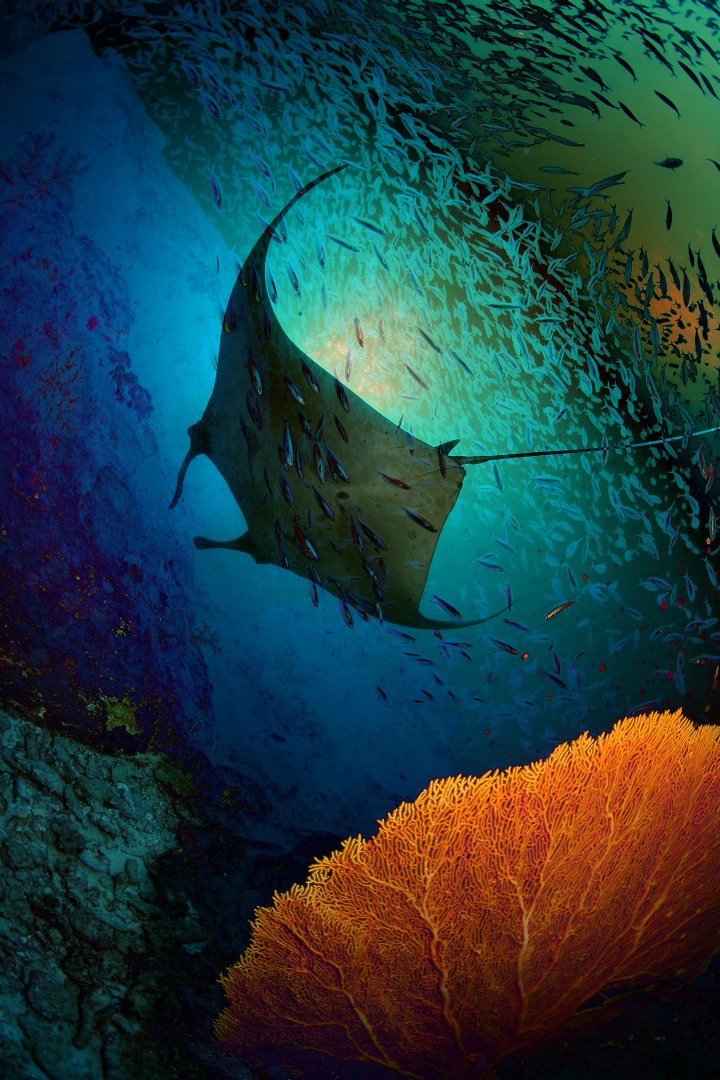
There was another event that had an impact. I'm not sure if it should be written in an interview. I badly injured my right hand and for a few months I couldn't work and I was recovering. And as a recovery simulator I chose - photoshop. I bought myself a graphics tablet and for a few months I re-learned how to use my fingers. And at the same time I learnt to process photos quite well.
Describe your overall vision for the photograph.
For me, photography is now divided into two components - the first is pure art. When I express my thoughts, feelings and ideas. There are no limits to the imagination and all forms and manifestations are available. In fact, the camera is just one of the means of self-expression. Maybe it's because I couldn't learn to draw well.
The second component, it is a means of storytelling and narrative. To communicate important information. And here we have to be honest and show things as they really are. A little bit of suspense is acceptable to have a greater effect on the viewer. To make them think about something important.
Both are important to me. I love artistic projects. And often I'm not even the photographer. I am interested in the moment when an idea is born. Once it is formed, I like to share it with others. I am happy when someone realizes one of my ideas. For me, this is much better than leaving them to gather dust somewhere on the back shelves of my memory.
But I can't do without full-fledged projects dedicated to popularizing the underwater world. For almost 10 years, my friends and I have been talking about what we see underwater. And why it is important for all the inhabitants of the earth.
'River world'
Why are you so attracted to underwater photography?
One of the main differences between underwater and land photography is distance. On land, you use a telephoto lens to photograph an animal from a great distance. This can be tens or even hundreds of metres. In the water, a distance of a few metres is already a very long distance. The best photos are taken when there are only a few centimetres between you and your subject. And it doesn't matter if it's a shrimp or a 5 metre shark. It makes the process very different. You're always right in the middle of it. The underwater world is poorly understood. We know less about it than we do about other planets in the solar system. Dozens of new species are discovered every year. New unique dive sites appear. Including historic ones. Underwater you can feel like a pioneer. Every dive is like crossing over to another world.
'Under the wave'
And of course water gives new opportunities for creativity!
What's more important to you - the mood/story behind your shots or technical perfection?
Technique is always a means to an end. You pick it up and use it. In underwater photography, the ideal is rarely achievable because the water is never completely clear. And when it comes to shooting animals, it's even more difficult in such places.
But it is much more important to convey feelings and impressions of the underwater world. And so that even people who have never dived, want to see it all with their own eyes. And this is where history, colours and shooting techniques come into play. It is necessary to attract attention and interest at any cost. That's why underwater photography is important not only for the photo itself, but also for its description. It often happens that an unprepared viewer does not understand what is depicted in the photo (because he has never seen anything like it). This is largely why photos of more familiar marine mammals and photos taken in half-water (splits) are better received. Then the land part creates a bridge to the underwater world.
'baby of the sea'
What is your relationship with your subject in general, apart from being an observer?
For example, if you are photographing fish or shellfish, there is the question of the ethics of the shot. It's important to minimize the impact on the subject. Don't harm it. Do not damage the environment. And if you know the basics of biology, you can get the best results.
But when it comes to mammals, it's different. Each one has its own personality, its own desires. And that's who you're interacting with. It usually takes more time to get to know them. Some swim away immediately. But there are always those who show interest and sympathy. Then a relationship is built. In these cases, filming takes several days. We try to dive on breath hold to be more like the sea creatures. It's also important to understand the animal's behaviour. Every little thing can be important - even the colour of the fins, or whether you let them touch your hand (analogous to nibbling on the fins of seals and sea lions).
The result can be not only photographs, but also the feeling of animals accepting you into their society, including you in their games and relationships.
'surrounded by lions'
Do you carefully prepare the places where you are going to take photos?
Sometimes a location can be chosen in a matter of minutes - several times I've been offered a trip that I couldn't refuse (and had no time to think about it). So I agreed to hot trips to Sudan, Fiji, New Zealand.
But more often than not, planning takes a year, or more. We often rent in places where there is nothing. No diving infrastructure, not even housing. Sometimes we dive in places where there were no people at all. Often these are wildlife reserve areas or border areas. In such cases, you have to plan literally everything. Contracts and permits. Such places include the Commander Islands, Kamchatka, the Kuril Islands. Moneron Island.
But for the longest time, perhaps, I have been hatching the idea of travelling to the sardine run in South Africa. It is an amazing natural phenomenon - the migration of fish accompanied by whales, dolphins, sharks, seals and birds. It took almost 10 years to complete. During this time I have learnt almost everything possible about the sardine run).
'Dolphin run'
What equipment do you use (camera, lenses, bag)?
I have had experience with a wide variety of cameras, but the main one has almost always been Canon. Now I use a Canon R5 in an Aquatica underwater box. In addition to that come the Inon 240, S2000 underwater flashes. They are compact and it is easy for me to use several flashes underwater if necessary, synchronising them with each other using optical sensors.
I use constant light only for video or specific situations where flashes can't be used. Lenses underwater are pretty standard - the main one is a fisheye. There are no straight lines in the water, so distortion is not so noticeable. That said, it gives volume even in the murkiest water. For many years I had a Canon 15 mm, but this year I replaced it with a new 8-15. The second lens is also a classic Canon 100mm macro lens. On which you can put macro lenses, a converter or rings. If necessary, you can increase the magnification to 1 in 3.
There is another old lens that I like to use underwater, the Sigma 28mm 1.8. At a very modest price, it can focus from zero distance. So it can be used in the murkiest water, shooting both small and medium sized subjects. I've also used it for underwater photography at slow shutter speeds.
'Steel stream'
This covers 99 per cent of the needs. Carrying more in hand luggage is problematic due to airline restrictions. When projects require more equipment, we agree with colleagues who will carry what. And in particularly complicated cases, we have to use cargo transport.
What software do you use for image processing?
I have been using Adobe Photoshop for many years, starting with version 5 (not CS5, just 5). I don't need to process a large number of photos, just the few dozen that go into publications, albums, project working materials or contests. So I hardly ever use Lightroom or any other intermediate options.
A good photo is worth spending your time on it for quality manual processing. Or I fantasise a bit with the help of photoshop.
'Fish dreams'
I use Nic Collection as add-ons for photoshop. Now I use neural networks a little bit. But more often for size enlargement tasks, as I have to print sometimes in formats of 2-3 metres. In all other cases irfanview is enough for me. It's a very lightweight viewer that allows you to quickly view photos on the go even on a prehistoric laptop, make small corrections, prepare sets of previews for publications.
Can you tell us anything else about your workflow?
Underwater photography imposes its own peculiarities. The thing is that the time of underwater photography itself is always very limited. You can shoot only a few hours per day. Each dive requires time for preparation. A trip or expedition is planned many months in advance, but you end up with only 20-30 hours of shooting. If you round up, that is about 100 hours in a good year.
Therefore, the ratio of time for the birth of new ideas, planning, thinking about different possible situations to the actual shooting time is huge. It is difficult to predict how exactly the shooting will go in the wild, so you need to think through a lot of possible options. This is 9x% of underwater photography.
In the water, I try to be open to whatever I see. It can be something planned in advance or something completely new and unexpected. But the time spent on the surface works here. You can make decisions almost instantly. And in all cases, it brings me joy. If everything goes according to plan, it's like meeting old friends you haven't seen for a long time. And if it's something new, it's like a pleasant surprise.
And if something goes wrong and there are problems, you can consider it an adventure. With good preparation, you get through them. And then you have something to tell your friends.
'On the edge of the world'
What is your advice for beginners in underwater photography and how to get started? get started?
The most important thing is to learn to observe. In doing so, you must be relaxed inside and focused on the world around you. This is not as easy as it seems. The cost of making a mistake in water is much higher than on the surface. Water cannot be overcome by force. You have to accept its rules. To do that, you have to spend a lot of time in the water. No amount of modern technology can compensate for that.
So my main advice to beginner underwater photographers is to spend more time in bodies of water. Small rivers and lakes close to home are great. Often there you can find the most unusual subjects. Plus will teach you to shoot in quite difficult conditions - usually in rivers and lakes water transparency is very low. After that, you'll find it much easier to dive and shoot anywhere in the world.
'Life movement'
Who are your favourite photographers and, more importantly, how has your appreciation of their work influenced your own approach to photography?
Yes, there are nature and underwater photographers who have influenced my attitude to photography a lot. There are quite a few, and each one has given me something different.
Alex Mustard - his imagination and experimentation, the ability to always find a new look at familiar things.
Laurie Campbell (https://lauriecampbell.com/) - an amazing attitude towards the nature of her country.
Jim Branderburg (https://jimbrandenburg.com/) - his energy and confidence, showed that photography, the photographer has no limits. Anything is possible.
And of course Dmitry Vinogradov (https://juicyworld.org/dmitry-vinogradov/), the man who gathered us, novice underwater photographers and gave us his passion for travel photography.
Are there any specific directions you would like to take your photography in the future, or any specific goals you want to achieve?
I experimented a lot with underwater and nature photography. I've used all sorts of technical devices like UV light, lasers, underwater tripods and hand-built models. But now I am more interested in popularising the underwater world of my country. I try to realise projects that show the beauty and vulnerability of the underwater world. Unfortunately, people do not think about what is on the other side of the water. And how their actions or inactions cause irreparable damage to various water bodies. Now we are planning to film a project about the underwater world of the metropolis. About those lakes, rivers, ponds that the citizens pass by every day. I hope it will draw their attention to existing environmental problems.
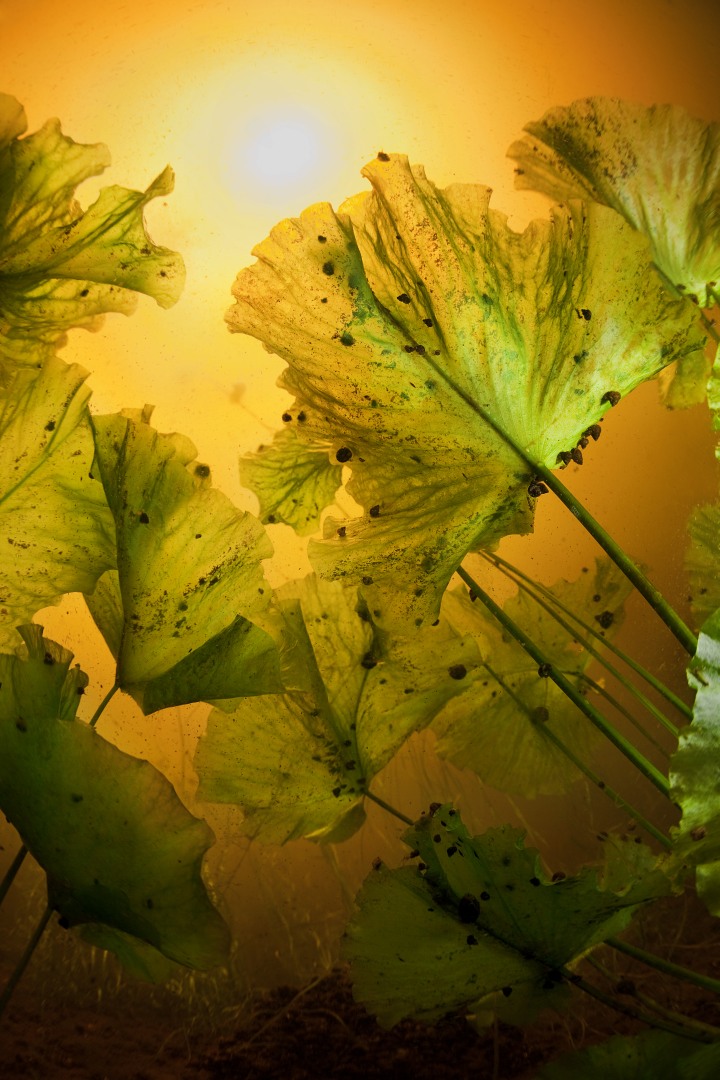
This photo was taken in the centre of a city of 15 million people
Describe your favourite photograph you have taken and why it is special to you?
Yes, there is such a picture. And it really wasn't in my 1x portfolio until this day. It's time to fix that.
It was one of the most amazing stories in all 20 years of diving. We had to shoot a photo story about salmon, red caviar and the fishermen who harvest it. Our group was diving in the Pacific Ocean half a kilometre off Sakhalin Island. But when I jumped into the water, I saw thousands of tiny creatures with wings all around me. I saw sea angels for the first time in my life. Before that, I had only seen them in photographs. We had a marine biologist on board and he confirmed it was them. But no one had ever seen them in such large numbers in one place. What's more, they've never been seen in this part of the Pacific either. Most of all, it was like a scene from the film Avatar, the path of water. when a string of angels saves the heroes.
When we looked closer, some of the angels were in pairs, moving in the water column as if dancing. Others carried small translucent bags of caviar. We spent several hours filming all this. Gradually the angels became less and less and at the end of the day they were almost gone from the water. They had probably gone back to their normal lives in the deep.
I dived in the area for a few more years, but never saw another angel again. (Or even heard of anything like it).
Those photos brought me success in major competitions like the WPY. The British Museum of Natural History included it in an album of the best underwater photos in 50 years. But more importantly for me, it is the only underwater photograph taken in my home country that has been so appreciated. A group of marine biologists from Germany who were studying angelfish were probably just as pleased. Before that, they had no information about the reproduction of these creatures in the natural environment.
'Romance among angels'
Is there anything else you'd like to add, and what do you think of 1X as a home base for your work?
I found the 1x site many years ago, and I always enjoyed looking at the photo selections here. They were different from most other sites. There were fewer of them, but they were unusual and interesting. It helped me a lot, especially in the beginning. Now here on the site is a compilation of history over a decade and a half.
'The Mask'
'Twin dance'
'Jellyfish sea'
'Once in the pool'
 | Write |
 | Bole Kuljic PRO Impressive and daring. Thank you for sharing your photos and story.Bravo. |
 | verdon PRO Fascinating category, out out outstanding portfolio and huge respect, great interview as well, congratulations |
 | Kashyap Shah Astonishing images! Thank you for sharing. |
 | Jennifer Lu Very nice work . Love "Steel stream " a lot , amazing |
 | Thierry Dufour PRO Splendid images, superb work, congrats Andrey !!! |
 | Izabella Végh PRO Bellissimo articolo, con altrettanto fotografie eccezionale. Congratulazione per il lavoro. |
 | Barathieu Gabriel PRO Nice work ! |
 | Tony Galvin PRO Wonderful images and story. As it happens I'm reading David Gibbins' fascinating book 'A History of the World in Twelve Shipwrecks' which goes into great detail about challenges of underwater archaeology. These marvellous images provide great context. |
 | Walter Lackner PRO WOW Amazing!!! |
 | Pang Teng Lin PRO Amazing work. Congratulations . Thank you for sharing. |